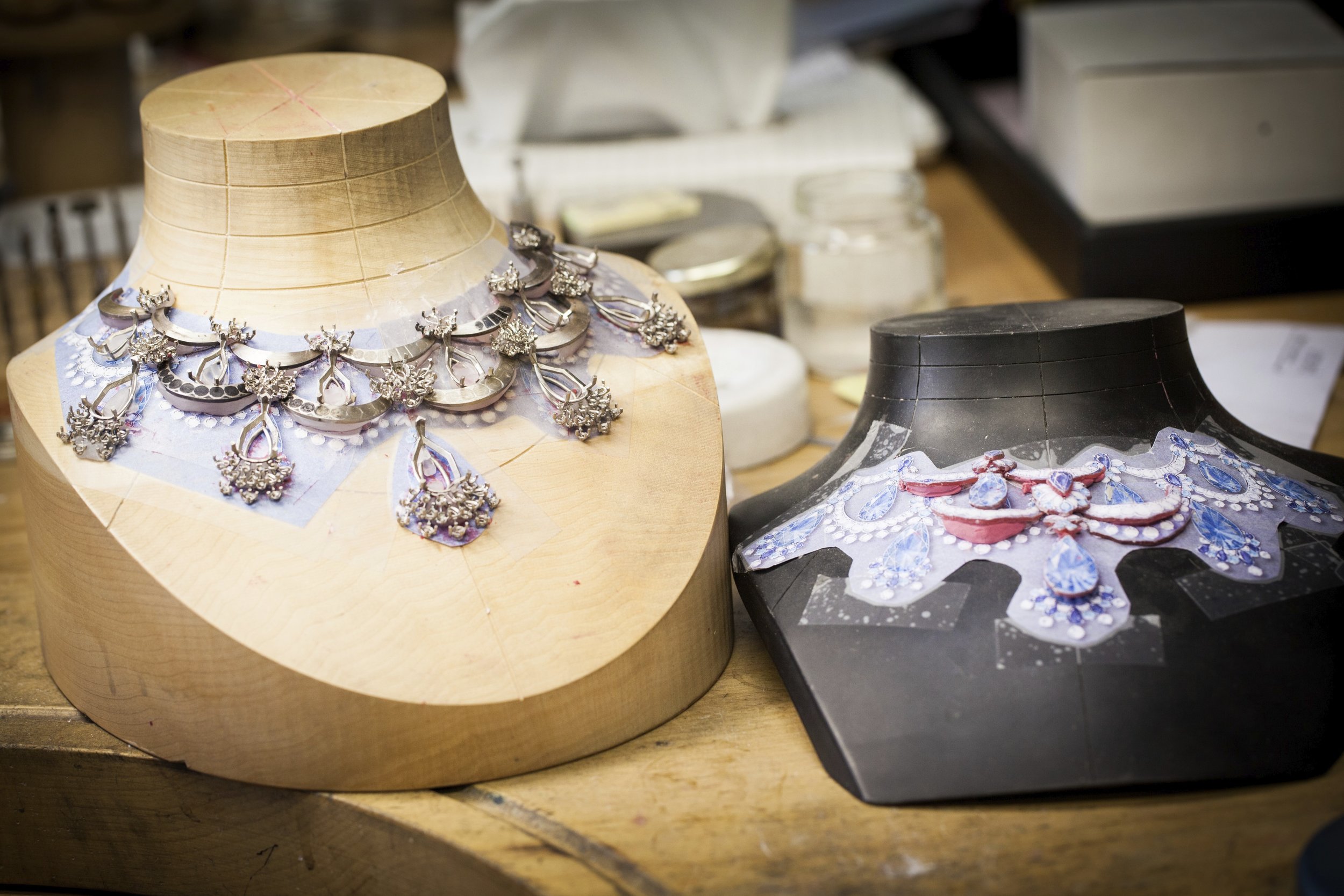The Stunning Jewels of The Biennale des Antiquaires
VAN CLEEF & ARPELS
If a masterpiece of haute joaillerie is the result of an arduous creative journey, the Biennale des Antiquaires is surely its classiest destination.
For many jewelers, the Biennale des Antiquaires in Paris is Mecca-like in its importance, a bi-annual event that is a culmination of two years of design and manufacture bringing together the rarest, most unique gemstones on earth and the finest craftsmanship used to shape them into wearable art.
“For us the Biennale is a consecration. You have to be selected, you can’t just participate,” said Jean-Bernard Forot, jewelry marketing director at Piaget. “[It’s a place] to exhibit our best, it’s not a boutique. It’s an opportunity to showcase our work next to art pieces that have a history, it’s an opportunity to spend time explaining each piece to the client and we think our pieces have a lot to say.”
Ever since its launch in 1956 by the Syndicat National des Antiquaires (the French national union of Antique dealers), the Parisian Biennale has developed a reputation for offering exceptional objects and works of art from some of the world’s finest antiques dealers who often save their most precious pieces for this exhibition of heritage and savoir faire attended by collectors with deep pockets, museum curators, and enthusiastic amateurs. Haute joaillerie has been included since 1964 injecting the biennial event with sparkle and luster.
French haute joailliers (Boucheron, Cartier, Chaumet, Mauboussin, and Van Cleef & Arpels) led the charge in the early years and have been joined in later years by well-known international jewelers like Harry Winston, Bulgari, Chopard, and Buccellati, to name a few.
“Early on with the first editions of the biennale, jewelers understood that it was attracting collectors from all around the world and that the event had the unique capacity to gather clients in a prestigious environment,” noted Christian Deydier, the former president of the Syndicat National des Antiquaires.
“Slowly, the Biennale has imposed itself as the big gathering of haute joaillerie houses for a few reasons. First, it is the concentration of the biggest collectors who come to the biennale because they are attracted by the exceptional Gala dinner or the VIP opening that gathers more than 9,000 people from all around the world. Secondly, the Biennale’s rhythm is perfect for jewelers. Two years are required to create a new collection, to find the rare stones and to assemble them in the ateliers. It would be impossible for the houses to create new collections each year,” Deydier added.
“Many visitors come to the Biennale des Antiquaires because it is held in Paris,” said François Curiel, president, Christie’s Asia, “it is the number one destination in the world and everybody loves to come here. Secondly, the Biennale has been around since the 1950s and it’s a very well-known, established event. There is a mystique around it because there are so many objects of quality gathered in one place. Most dealers keep their discoveries for the Biennale.”
Curiel noted that the Biennale, and in particular its departing president, Deydier, have created a “wonderful marketing machine” promoting the event extensively in Asia to reach out to new collectors.
“The Biennale is really an event (that’s) quasi mythic,” argued Pierre Rainero, image & heritage director, Cartier, “When it was first launched, it was ‘the’ world event because there was really nothing else similar. Today, it still remains very important because it has certain particularities, like its location at the Grand Palais, the quality of the exhibitors and the overall presentation or mise en scene of each booth, which is very French. This is not a fair, what I mean is that it’s not just a commercial event, it’s a destination of pleasure, not just for the collectors and buyers, but for all.”
In recent Biennales, the presence of jewellers has increased steadily from seven in 2010 to 10 in 2012 and 14 this year, with new comers Giampiero Bodino, Graff Diamonds, and Alexandre Reza, joining Biennale regulars Boucheron, Bulgari, Cartier, Chanel, Chaumet, Dior, Piaget, Siegelson, Van Cleef & Arpels, and Wallace Chan. Each stand promises to be a feast for the eyes.
For haute joaillerie, three main criteria are necessary to make the cut for presentation at the Biennale: the overall quality of the stones, chosen for their purity, beauty, and cut perfection; the design creation that synergizes the imagination of the designer with the latest jewelry techniques; and the high level of craftsmanship that keeps alive centuries-old traditions to magnify the precious stones.
Deydier noted an important trend that has developed since 2008: the creation of unique pieces by each exhibitor. “Our wish as organizers of this event is to make sure that visitors see very rare objects of art and jewelry. If the visitor comes to the Biennale and sees the same jewelry as in Place Vendôme, there is no point to the event,” Deydier pointed out.
As first published on BLOUINARTINFO.COM




